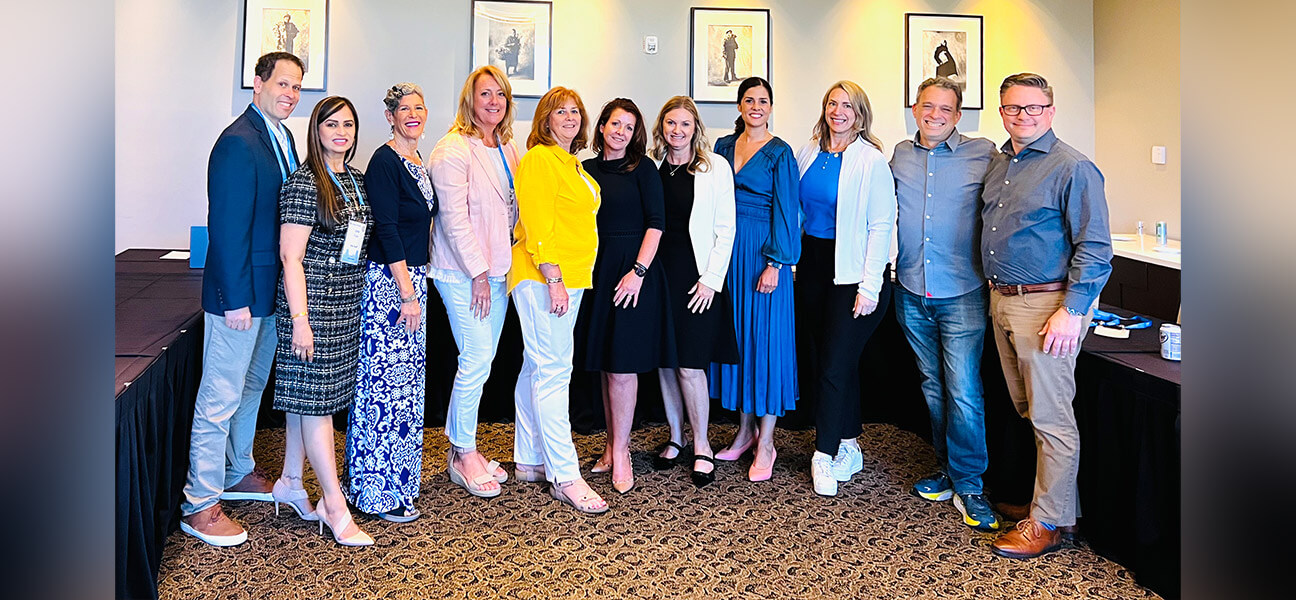Leaders from hotel brands, ownership and technology groups met at the 2023 Lodging Conference to explore an untapped resource for helping hotels tackle the most intractable challenges in today’s complex operating environment: Finding ways to leverage the power of collaboration across tech disciplines, and between technology providers, hotel owners and managers.
The discussion marked the first meeting of a new Women’s Hospitality Innovation Council, powered by property management system (PMS) provider Visual Matrix.
Participating in the discussion were:
Julie Arrowsmith, president/CEO, G6 Hospitality
Mercedes Blanco, chief partnerships officer, The Hotels Network
Michael Frenkel, president, Travel Conversations LLC
Ali Jarosh, VP, account management, IDeaS
Glenn Haussman, founder/host, No Vacancy Podcast
Patty Jefferson, chief development officer, Visual Matrix
Dayna Kully, cofounder, 5th Generation Wireless
Flo Lugli, founder/principal, Navisenk Advisory Group
Georgine Muntz, CEO, Visual Matrix
Lina Patel, director, strategic franchise initiatives, Red Roof
The group, which included executives accounting for more than 3,000 branded hotels, wireless technology companies and members of AHLA’s ForWard women’s initiative, shared personal anecdotes about working in the industry as senior-level women, and reviewed the state of the technology landscape, notably the inability of the industry to work fast enough and without friction to provide integrated solutions to hotel owners, franchisees and managers.
One source of the problem remains the PMS, as ever the central node for directing inbound traffic, commerce and the management of core property-level functions.
Several participants noted that despite advances in the core PMS technology, the industry remains slow to adopt and integrate such solutions. It can take weeks to fully “switch on” a property once it is open, and there is no universally acceptable solution for managing delays and the inability of core technologies to speak to one another to make overall property management more efficient. The inability of technologies to integrate quickly and seamlessly is both expensive and inefficient.
“This is an issue we see all the time and are responding to as a company,” said Visual Matrix’ Muntz. “There are many solutions out there, and innovation is moving more quickly than ever. Bringing together the talent working on this issue to collaborate rather than compete feels like a winning formula for us as well as for hotels.”
A bright spot
In searching for pathways toward a solution, the group agreed that AHLA’s HTNG work groups have enabled valuable progress and present a model for future collaboration.
Founded in 2002 under the name Hotel Technology Next Generation, the organization’s mission is to “harness the collective wisdom of technology leaders across hospitality to solve common problems and unlock global business potential.”
How does it relate to the mission of the newly formed women’s group?
“It’s simple,” said Muntz. “Women are good at solving common problems and multitasking in ways that enable progress on multiple problems at once—a core quality needed in today’s hospitality landscape. The more we multitask, side by side, the more we will understand one another’s challenges and be able to work toward common solutions—instead of getting stuck in silos.”
Leaders of HTNG agree that collaboration among vendors, and between providers and hotel owners, is absolutely essential.
Sandy Angel, senior director, technology & information, AHLA, parent company of HTNG, said, “The more voices, the better, and these should include representatives from the HTNG workgroups and others across the industry.”
Angel will address the Women’s Innovation Council at its next meeting in November,
One central question for the group will be: What common projects are worth exploring in the context of innovation, and what can industry leaders from all sides do to foster it?
The women’s innovation group plans to meet regularly to tackle concrete common problems among its members, with an eye toward solving the bigger operational problems faced by the industry.
“We can all sell our solutions independently, and should,” concluded Muntz. “By supplementing competition with collaboration, we open the door to reduced integration times, easier implementation and cost efficiencies. That is good for everyone.”




